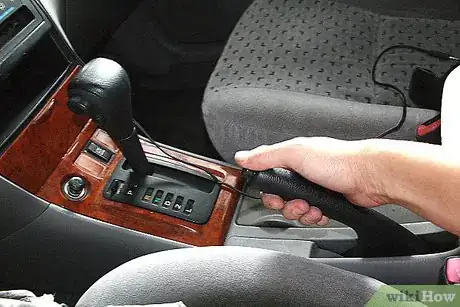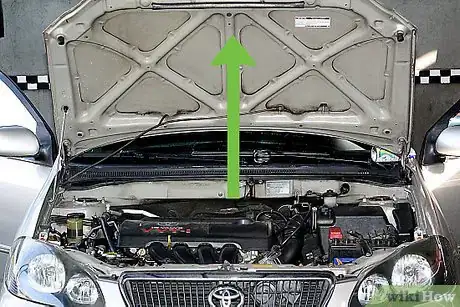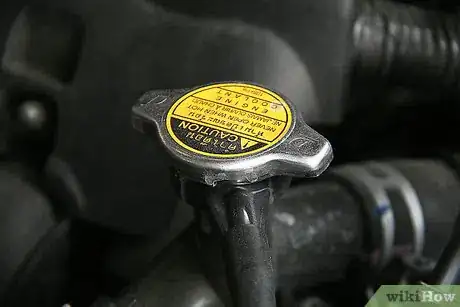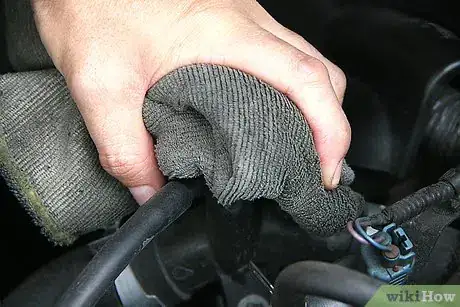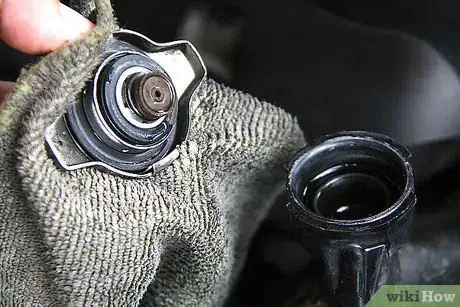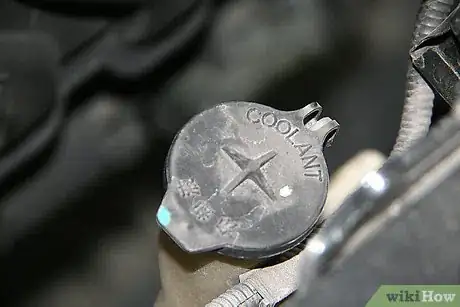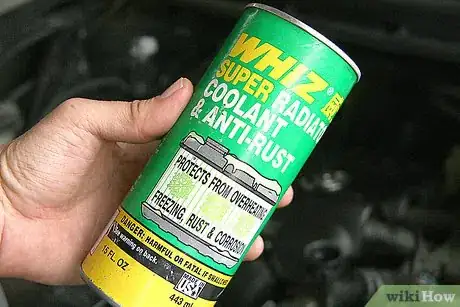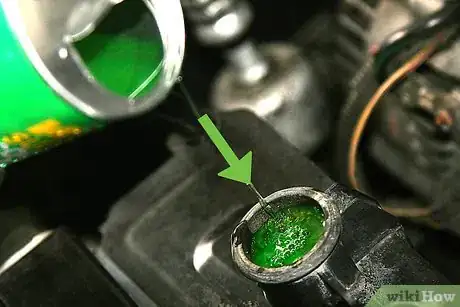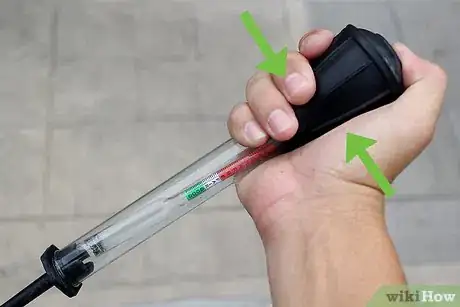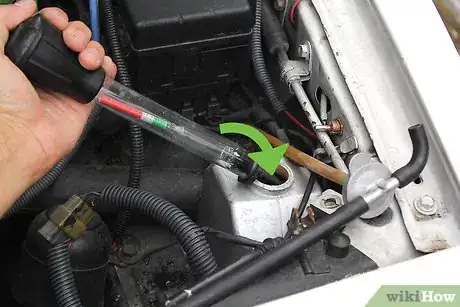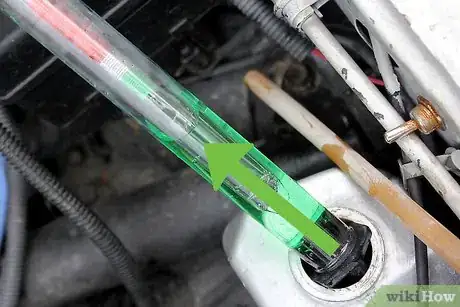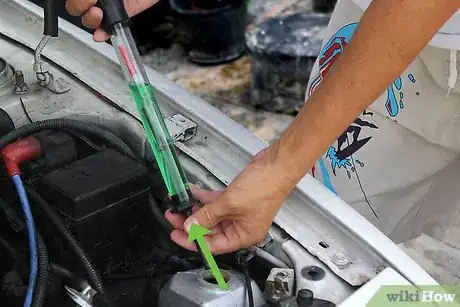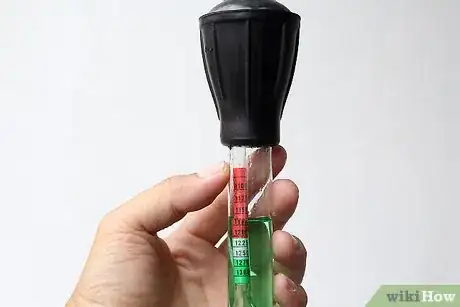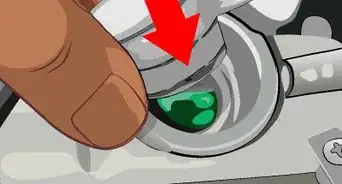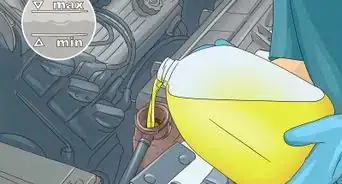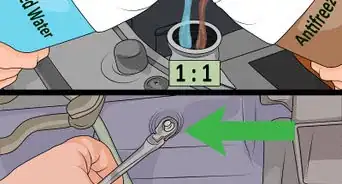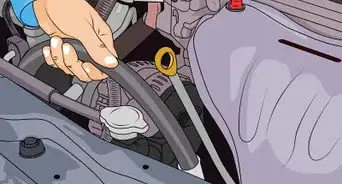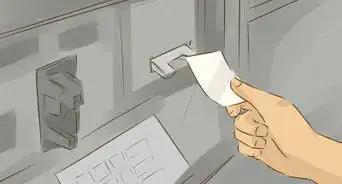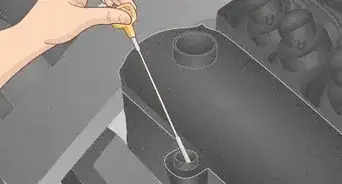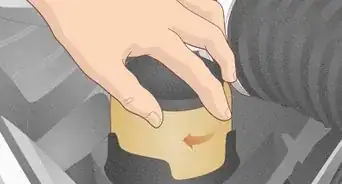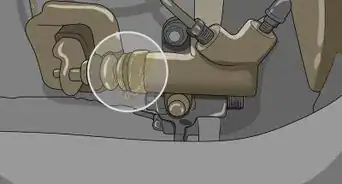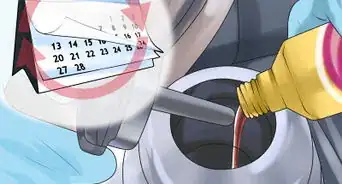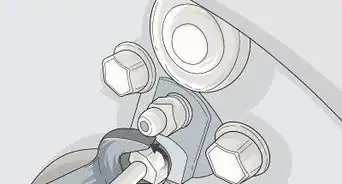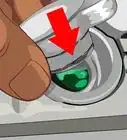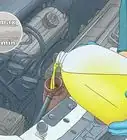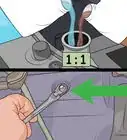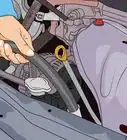This article was co-authored by Jason Shackelford. Jason Shackelford is the Owner of Stingray Auto Repair, a family owned and operated auto repair shop with locations in Seattle and Redmond, Washington. He has over 24 years of experience in auto repair and services, and every single technician on Jason’s team has more than 10 years of experience.
There are 9 references cited in this article, which can be found at the bottom of the page.
wikiHow marks an article as reader-approved once it receives enough positive feedback. In this case, 100% of readers who voted found the article helpful, earning it our reader-approved status.
This article has been viewed 840,362 times.
Your car's radiator is the heart of its cooling system, which also includes a fan, water pump, thermostat, hoses, belts, and sensors. It directs coolant around cylinder heads and valves to absorb their heat, return it to the radiator, and dissipate it safely. Because of this, you need to maintain an adequate radiator fluid level, which means you need to check the coolant level and add to it when necessary.
Steps
Checking the Radiator Fluid Level
-
1Park the car on a level surface. Ideally, you should do so after driving the car a short distance. You want to check the antifreeze or coolant level while the engine is cool or lukewarm, not hot or cold. If you have driven the car a longer distance, let the engine cool for several hours.[1]
- Do not leave the engine running when you check the radiator fluid level, and do not ever try to check the radiator fluid level when the engine is hot.
-
2Raise the hood.Advertisement
-
3Look for the radiator cap. The radiator cap is a pressurized cap near the top of the radiator. Newer cars label the cap; if yours isn't so labeled, check your owner's manual to find it.[2]
-
4Wrap a rag over the cap and remove it. The radiator and overflow caps absorb engine heat from the coolant; using a rag protects you from being scalded.[3]
- Place your pointer finger and middle finger from one hand together and press down on the cap while simultaneously turning the cap off with your other hand. This will prevent a coolant burst in the event that the system is still pressurized.
-
5Check the radiator fluid level. The coolant level should be near the top. If there is any "Full" marking etched into the radiator metal, that is the level to where your coolant should be.
-
6Find the cap to your radiator overflow tank and remove it. Besides the radiator tank, most modern cars have an overflow tank for the radiator fluid to expand into when it gets hot. You should normally find little fluid in here, if any. If your coolant level is low in the radiator and nearly full in the overflow tank long after the car has been driven, take the car in for servicing at once.
-
7Check the freezing and boiling point of your coolant. Over time, the ability of your radiator fluid to absorb and dissipate heat declines. You test the freezing and boiling points with an antifreeze hydrometer. See the directions under "Checking the Coolant Protection Level."
-
8Add coolant as needed. Add the fluid to the overflow tank if your car has one; otherwise, add it to the radiator. (You may want to use a funnel to prevent spillage.) Under most driving conditions, antifreeze should be mixed with distilled water at a one to one ratio, or half antifreeze and half distilled water. In more severe climates, you can go as high as 70 percent antifreeze to 30 percent water, but no higher.
- Do not add fluid while the engine is still warm.
Checking the Coolant Protection Level
-
1Squeeze the hydrometer bulb. This forces air out of the hydrometer.[4]
-
2Insert the hydrometer's rubber tube into the coolant.
-
3Release the bulb. This draws coolant into the hydrometer, so it floats either the needle or the plastic balls inside the hydrometer.[5]
-
4Remove the hydrometer from the coolant.
-
5Read the freezing or boiling point level on the hydrometer. If your hydrometer uses a needle, the needle should point to either a specific temperature or temperature range. If it uses a series of plastic balls, the number of balls that can float indicates how well your antifreeze protects the engine from freeze-up or boil over. If the level is insufficient, you will need either to add coolant or replace it.[6]
- You should test the coolant protection level in the spring and fall, and more often if you drive the car under extreme conditions.
Warnings
- If you notice fluid underneath your car matching the color of its antifreeze, or notice a sulfurous smell, hear a whistling sound or the temperature gauge goes up and stays up when you drive, take your car in for servicing immediately.⧼thumbs_response⧽
- Most antifreeze contains ethylene glycol, which is toxic to humans and animals. Old antifreeze should be disposed of properly. Ask your local auto body shop where you can safely dispose of antifreeze. Never pour it on your lawn or in a storm drain.[9]⧼thumbs_response⧽
Things You'll Need
- Antifreeze/coolant
- Distilled water
- Antifreeze hydrometer/tester
- Rag
- Funnel (optional)
References
- ↑ https://www.edmunds.com/how-to/how-to-maintain-your-cars-fluid-levels.html?articleid=45400
- ↑ https://parts.olathetoyota.com/blog/4476/radiator-fluid-levels
- ↑ https://www.geico.com/more/driving/auto/auto-care/check-engine-light-and-fluid-levels-car-maintenance-101/
- ↑ https://www.edmunds.com/how-to/how-to-maintain-your-vehicles-cooling-system.html?articleid=43789
- ↑ https://www.canadiantire.ca/en/howto/project.html/project/Auto/how-to-check-coolant-levels-in-your-car.html
- ↑ http://www.oemantifreeze.com/how-to/
- ↑ http://sayginyalcin.de/expert-tips-how-to-properly-maintain-your-car/
- ↑ Jason Shackelford. Auto Technician. Expert Interview. 11 June 2019.
- ↑ https://www.cdc.gov/niosh/ershdb/emergencyresponsecard_29750031.html
About This Article
To check your car’s radiator fluid, park the car on a level surface and turn off the engine. Wait until the engine is cool, then pop the hood. Locate the radiator cap, then wrap a rag around the cap and twist it while pressing down at the same time to remove it. Look inside the radiator to make sure the coolant level is near the top or that it reaches the “fill” line inside. Check inside the overflow tank as well—it should be empty or nearly empty. If the overflow tank is full and the radiator is almost empty, your car may need maintenance. If your radiator is low on coolant, use a funnel to add more either to the overflow tank (if your car has one) or directly to the main radiator reservoir. To learn how to test the coolant protection level using a hydrometer, read on!
